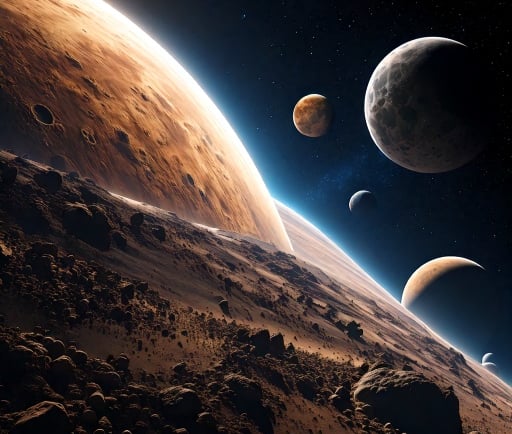The Possibility of Exomoons Around Gas Giants in Habitable Zones


Introduction to Gas Giants and Exomoons
The vastness of our universe presents several opportunities for discovery, particularly in the realm of exoplanets and their potential for hosting life. Among these celestial bodies, gas giants—such as Jupiter and Saturn—are noteworthy not only for their size but also for their multitude of moons. Recent research suggests that gas giants located within habitable zones of their stars may be the most promising candidates for hosting exomoons, further expanding the possibilities for extraterrestrial life.
The Habitable Zone Explained
The habitable zone, often referred to as the "Goldilocks Zone," is the region around a star where conditions may be suitable for liquid water to exist, a crucial factor for life as we know it. While rocky planets like Earth are typically considered prime candidates for habitability, gas giants often host large numbers of moons that could provide similar conditions. These moons, if situated within the habitable zone, might possess atmospheres and surface conditions conducive to life.
The Case of Jupiter and Its Moons
Focusing on our solar system, Jupiter stands out as the gas giant with the largest number of moons, boasting over 79 confirmed satellites. Among these, Europa is particularly intriguing due to its subsurface ocean, which may harbor conditions suitable for life. If we extend this logic to gas giants located in habitable zones outside of our solar system, we can speculate that their moons could similarly host environments suitable for sustaining life. This prospect positions these exomoons within a unique framework of astrobiological interest.
Future Research and Implications
As astronomers continue to explore the cosmos, the study of gas giants within habitable zones reveals exciting potential. Exomoons may not only offer insights into the evolution of planetary systems but could also serve as crucial indicators of life beyond Earth. Future missions, including the James Webb Space Telescope, aim to study the atmospheres of these exomoons and evaluate their habitability factors. The prospect of discovering life from another planet adds a layer of significance to ongoing research, igniting the curiosity of scientists and enthusiasts alike.
Conclusion
In summary, the gas giants within habitable zones emerge as likely candidates for hosting exomoons. The rich variety of moons orbiting gas giants like Jupiter enhances the potential for discovering life beyond our planet. As the scientific community continues to broaden the horizons of exoplanet research, the possibility of finding habitable exomoons moves closer to reality, offering a glimmer of hope in our quest to understand life's existence across the universe.
